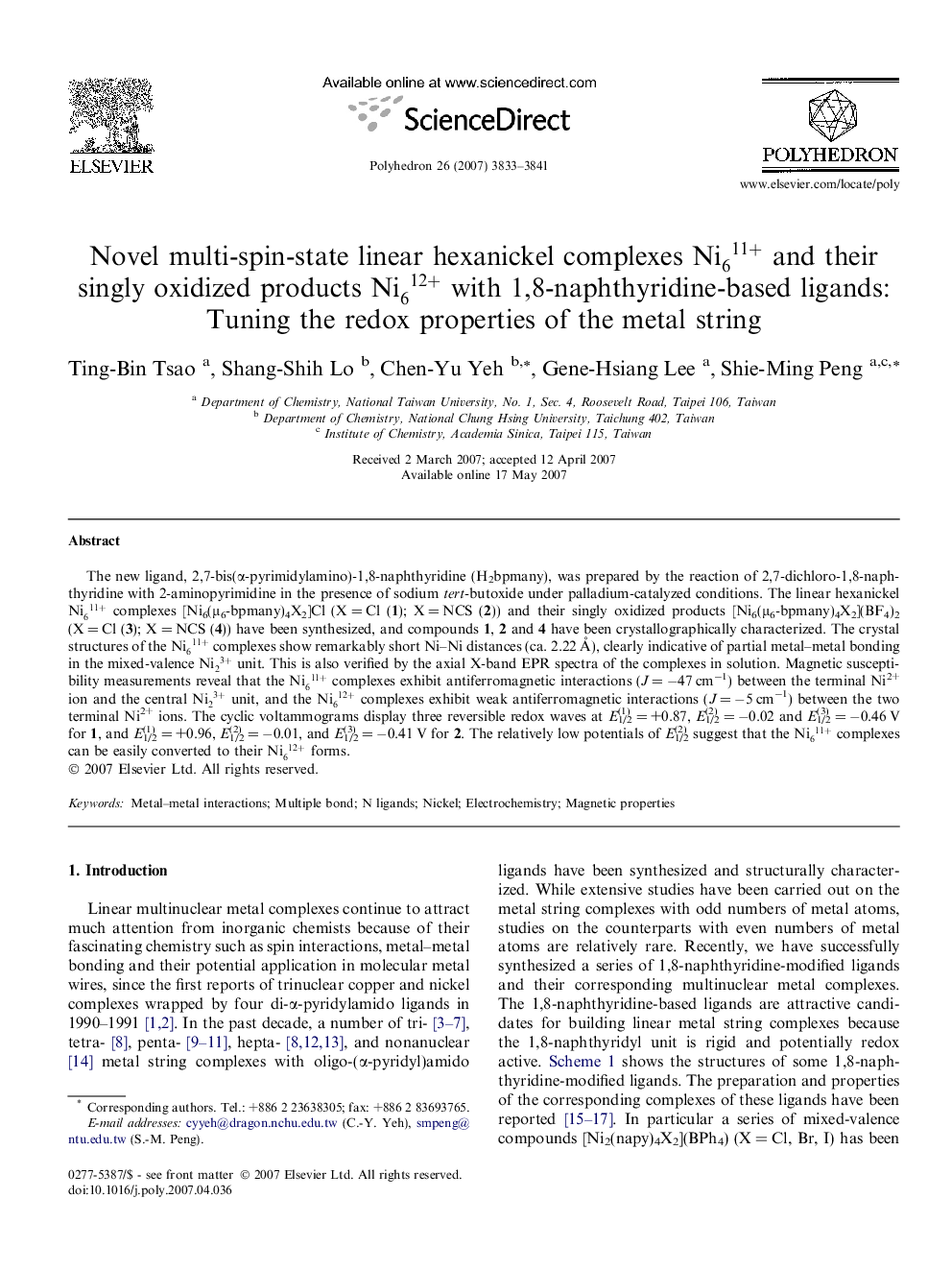| کد مقاله | کد نشریه | سال انتشار | مقاله انگلیسی | نسخه تمام متن |
|---|---|---|---|---|
| 1339761 | 979714 | 2007 | 9 صفحه PDF | دانلود رایگان |

The new ligand, 2,7-bis(α-pyrimidylamino)-1,8-naphthyridine (H2bpmany), was prepared by the reaction of 2,7-dichloro-1,8-naphthyridine with 2-aminopyrimidine in the presence of sodium tert -butoxide under palladium-catalyzed conditions. The linear hexanickel Ni611+ complexes [Ni6(μ6-bpmany)4X2]Cl (X = Cl (1); X = NCS (2)) and their singly oxidized products [Ni6(μ6-bpmany)4X2](BF4)2 (X = Cl (3); X = NCS (4)) have been synthesized, and compounds 1, 2 and 4 have been crystallographically characterized. The crystal structures of the Ni611+ complexes show remarkably short Ni–Ni distances (ca. 2.22 Å), clearly indicative of partial metal–metal bonding in the mixed-valence Ni23+ unit. This is also verified by the axial X-band EPR spectra of the complexes in solution. Magnetic susceptibility measurements reveal that the Ni611+ complexes exhibit antiferromagnetic interactions (J = −47 cm−1) between the terminal Ni2+ ion and the central Ni23+ unit, and the Ni612+ complexes exhibit weak antiferromagnetic interactions (J = −5 cm−1) between the two terminal Ni2+ ions. The cyclic voltammograms display three reversible redox waves at E(1)1/2 = +0.87, E(2)1/2 = −0.02 and E(3)1/2 = −0.46 V for 1, and E(1)1/2 = +0.96, E(2)1/2 = −0.01, and E(3)1/2 = −0.41 V for 2. The relatively low potentials of E(2)1/2 suggest that the Ni611+ complexes can be easily converted to their Ni612+ forms.
A series of hexanickel complexes (Ni612+) and their corresponding one-electron reduction forms (Ni611+) have been synthesized and structurally characterized. In the Ni612+ complexes, there is no metal–metal bonding between the adjacent nickel ions. In contrast, the central dinickel unit shows partial metal–metal bonding for the Ni611+ complexes.Figure optionsDownload as PowerPoint slide
Journal: Polyhedron - Volume 26, Issue 14, 31 August 2007, Pages 3833–3841